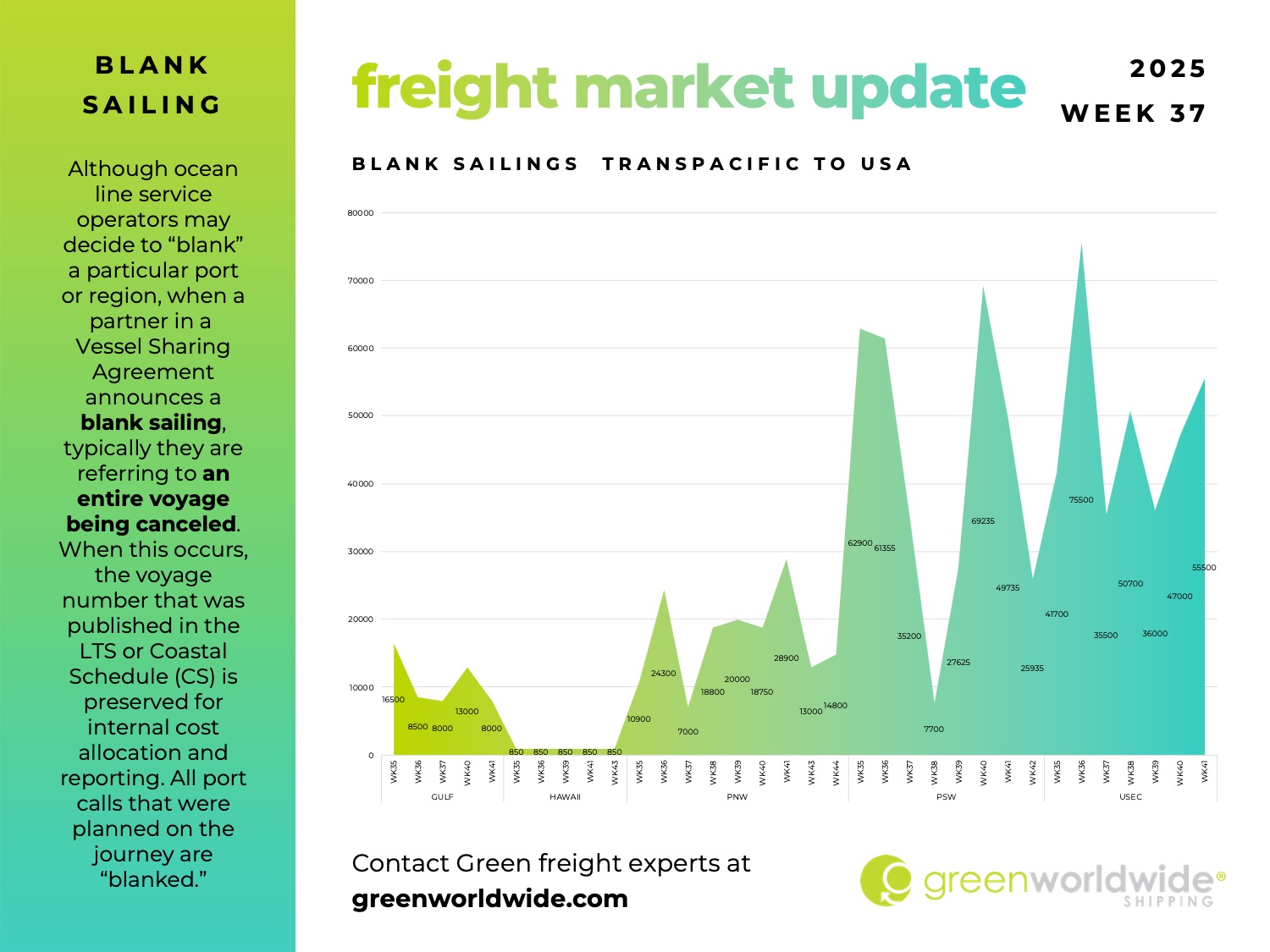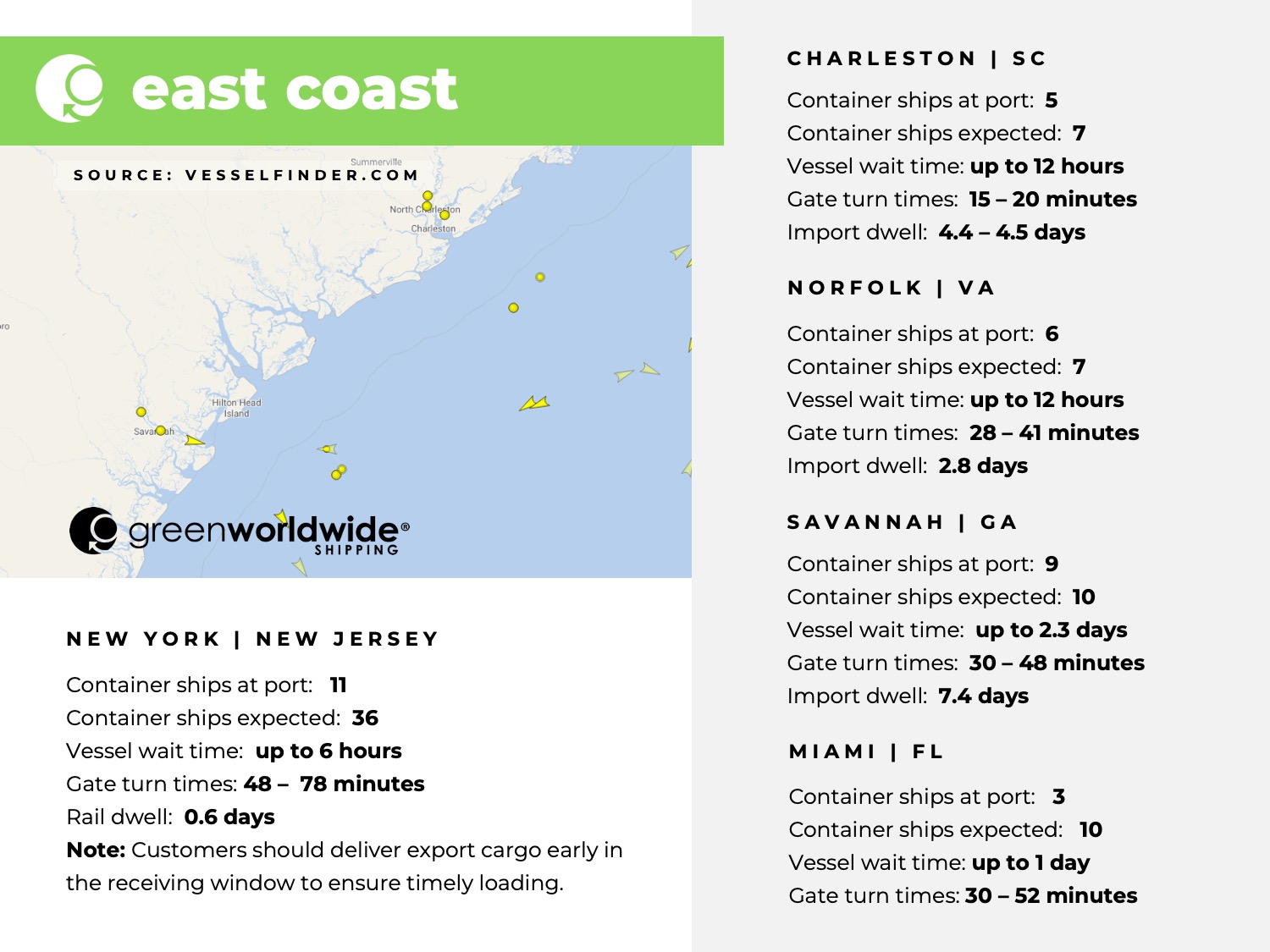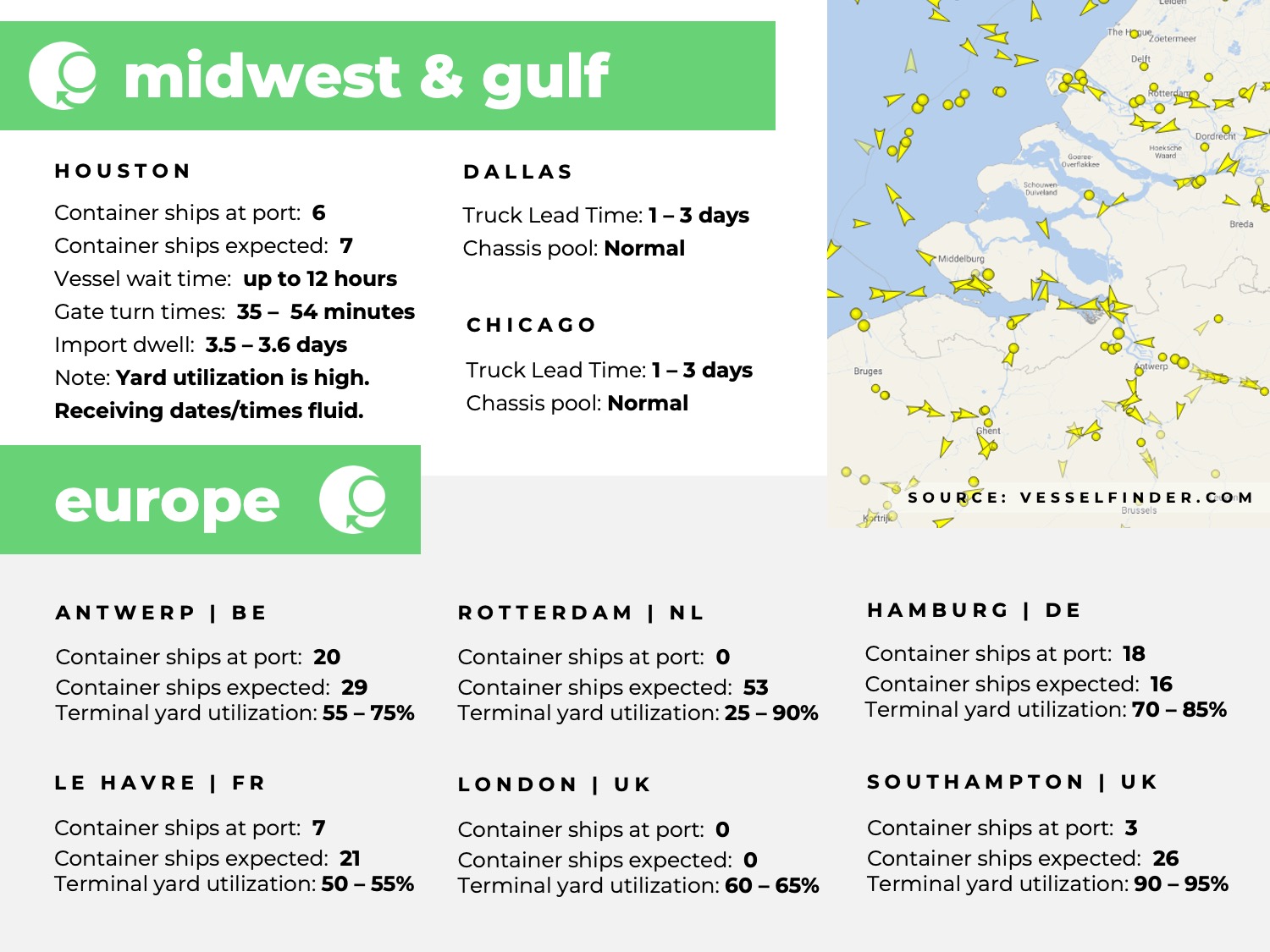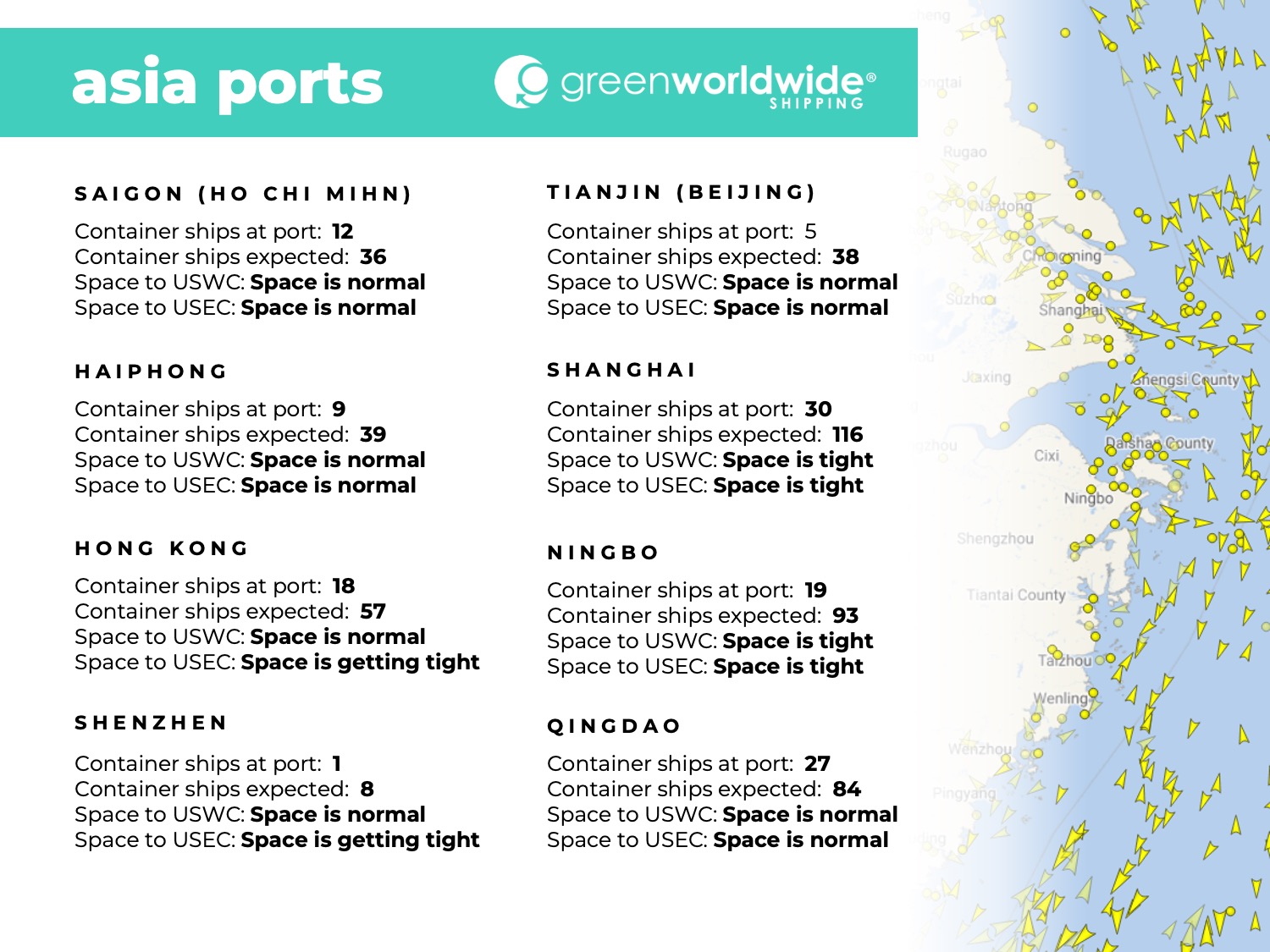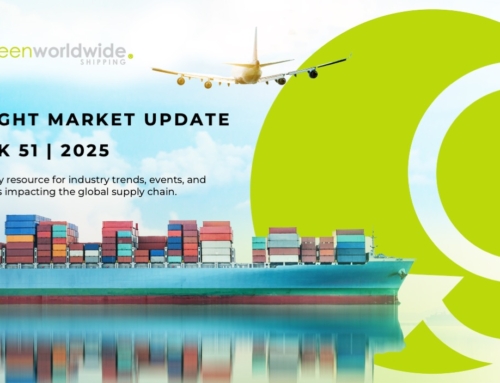Week 37 finds U.S. importers managing elevated inventories as blank sailings reshape transpacific services, congestion builds at key Asian ports, and new trade policies alter tariff obligations heading into the fourth quarter.
IS A PEAK SEASON SURGE TAKING SHAPE?
Carriers doubled blank sailings in Weeks 35 and 36, signaling continued capacity management into October. ONE has suspended its PS5 service, while Ocean Alliance members account for more than half of the 35 void sailings already announced for next month. Despite these measures, demand remains soft. Many U.S. importers report higher inventories and have paused shipments, leaving little indication of a traditional seasonal peak.
HOW ARE PORT CONGESTION DELAYS IMPACTING ASIAN PORT OPERATIONS?
Port congestion continues to create scheduling issues across key Asian hubs:
-
Shanghai (Yangshan): 15 vessels anchored with average berth delays of three days.
-
Shanghai (Waigaoqiao): Up to 20 vessels waiting; delays of 1.5–3 days at WGQ terminals, with WGQ4 facing the heaviest impact.
-
Qingdao: A nine-hour channel closure on September 1 compounded congestion. QQCT terminals are experiencing delays of about two days.
-
Singapore: Yard density remains elevated at approximately 85 percent. Vessel delays exceed two days, and restrictions on net dischargers remain in place until yard conditions normalize.
HOW ARE U.S. TRADE POLICY CHANGES IMPACTING IMPORTERS?
New Executive Order Brings Additional Changes to Reciprocal Tariffs
A September 5, 2025, Executive Order revised the scope of reciprocal tariffs. Annex II was updated to exempt bullion-related articles, selected pharmaceuticals, and critical minerals under Section 232 review, while aluminum hydroxide, resins, and silicones were removed from exemption and are now subject to reciprocal tariffs. The order also introduced Annex III, which outlines potential tariff adjustments for aligned partners, covering aircraft, generic pharmaceuticals, agricultural goods not produced domestically, and natural resources unavailable in the United States. Importers claiming Annex II exemptions must use HTSUS subheading 9903.01.32 alongside primary classifications, with corrections required within ten days for affected entries.
Judicial review is also underway. On August 29, 2025, the U.S. Court of Appeals for the Federal Circuit ruled that the International Emergency Economic Powers Act does not authorize tariffs. On September 9, the U.S. Supreme Court agreed to consolidate related cases, scheduling oral arguments for November 2025.
U.S.-Japan Trade Agreement Announced
In related news, the U.S. announced a new trade agreement with Japan on September 5. The agreement establishes a 15 percent baseline duty on most Japanese imports, retroactive to August 7, with sector-specific provisions for autos, aerospace, pharmaceuticals, and natural resources. Exemptions remain for goods not produced domestically, including generic pharmaceuticals and chemical precursors. Japan committed $550 billion in U.S. investment across industries such as semiconductors, energy infrastructure, and advanced technologies. Expanded U.S. export opportunities include $8 billion annually in agricultural imports, $7 billion in energy, recognition of U.S. automotive safety standards, subsidies for U.S.-made clean energy vehicles, and purchases of U.S. aircraft and defense equipment. CBP will administer refunds on qualifying shipments, with tariff schedule updates to follow in the Federal Register.
WHAT HAPPENED AT THE PORT OF LONG BEACH THIS WEEK?
On September 9, 2025, 67 containers fell from the vessel Mississippi at Pier G in the Port of Long Beach. A Unified Command has been established with the U.S. Coast Guard, port officials, and local emergency services leading the response. Cargo operations at Pier G are temporarily suspended for safety assessments, though the terminal remains open to truckers.
The Coast Guard has imposed a 500-yard safety zone around the vessel and continues to issue hourly marine safety broadcasts. No injuries have been reported, and investigations into the cause are ongoing.
Stay up-to-date on freight news with Green’s Weekly Freight Market Update by following us on LinkedIn. For continuous updates, make sure to check out our website at greenworldwide.com.


